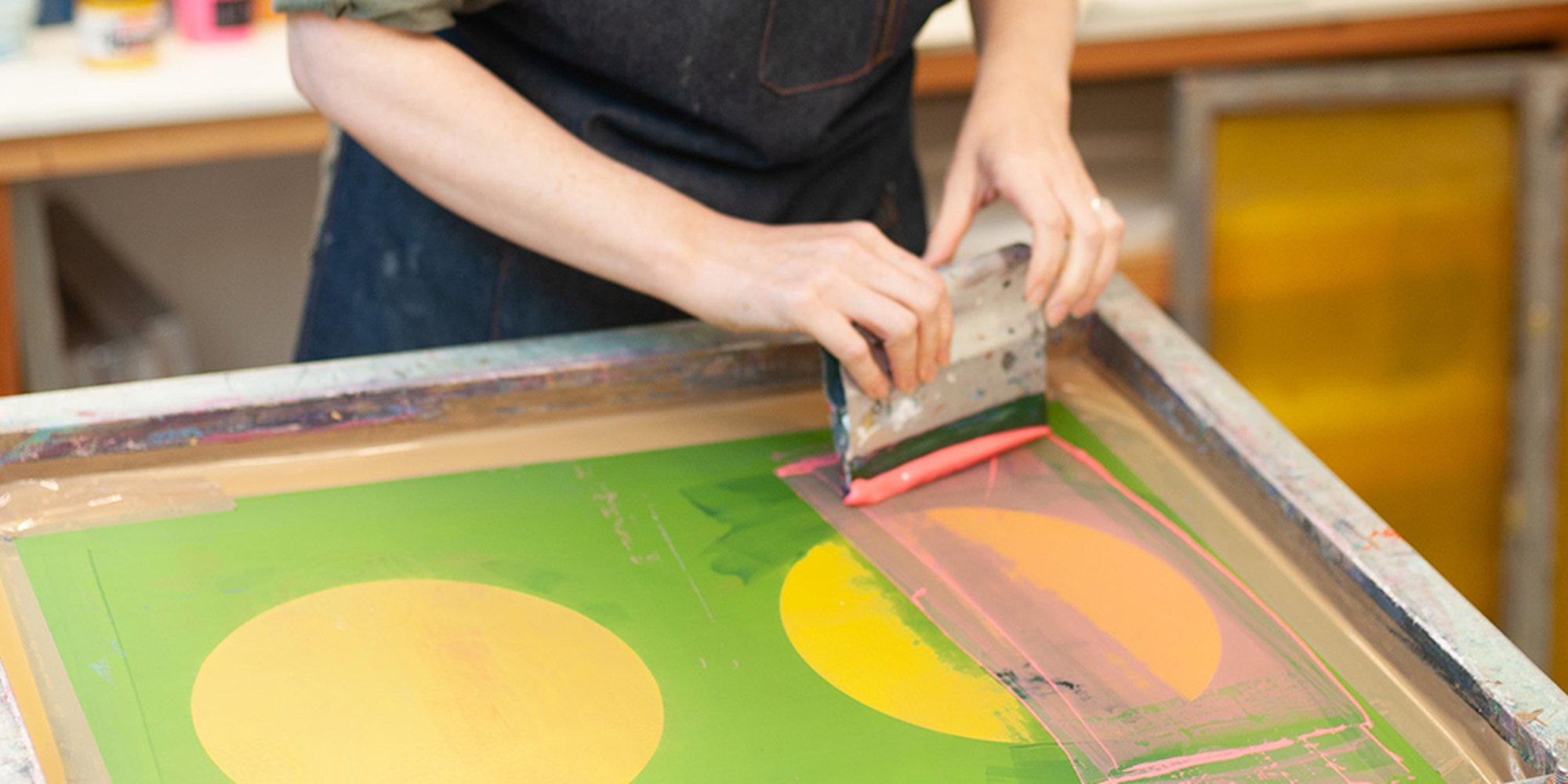ChatGPT said: The advantages of working with 10:9 Design Embroidery for branding
The Important Overview to Recognizing Screen Printing and Its Versatile Uses
Screen printing has a rich history that goes back to old times, developing right into a sophisticated method utilized throughout various industries today. This overview discovers the details of the screen printing process, detailing its applications in fashion, marketing, and home style - 10:9 Design Texas. Recognizing these principles can open innovative possibility for both business and artistic projects. The complying with sections will reveal important ideas and strategies to boost one's screen printing ventures
The History of Screen Printing
Although screen printing has origins that map back centuries, its advancement mirrors the technological and creative developments of numerous societies. Coming from old China, the strategy was originally made use of for enhancing textiles and later infect Japan, where it came to be indispensable to Ukiyo-e woodblock printing. The approach changed to Europe in the 18th century, where it gained popularity among craftsmens and commercial printers. The innovation of photo emulsion in the 20th century revolutionized screen printing, allowing for more detailed layouts and better effectiveness. Artists like Andy Warhol even more pushed its popularity, utilizing the tool to develop renowned works that blended commercialism and art. By the late 20th century, screen printing had developed itself as a flexible strategy, employed in style, marketing, and art. Today, it continues to evolve, incorporating electronic modern technology and broadening its applications across numerous markets.
The Screen Printing Process Explained
Screen printing changes artistic visions into tangible layouts through a collection of exact steps. A photo is created and after that transferred onto a screen, commonly made of fine mesh material stretched over a structure. A light-sensitive emulsion is used to the screen, which is exposed to light, setting in locations not covered by the image. After rinsing the unhardened emulsion, a stencil is created.
Next, the screen is placed over the substrate, whether it be fabric, paper, or an additional material. Ink is after that pushed with the open locations of the pattern making use of a squeegee, depositing the layout onto the substrate below. This process can be duplicated for multiple shades, requiring separate screens for each color. Finally, the printed thing is cured utilizing warm to ensure the ink adheres effectively, leading to a resilient, lively layout all set for use.
Kinds of Screen Printing Techniques

Additionally, specialized techniques, such as discharge screen printing, get rid of dye from the textile to create softer prints, while aluminum foil screen printing applies metallic foil to accomplish a glossy surface (10:9 Design Screen Printing). Each technique uses distinct features, accommodating different imaginative needs and manufacturing ranges, ultimately expanding the opportunities within the screen printing domain
Applications of Screen Printing in Various Industries

Furthermore, the signage and advertising and marketing industries use screen printing for developing appealing displays and banners. This method enables vibrant shades and detailed designs that record focus. In electronics, screen printing is utilized for using conductive inks to motherboard, vital for element links. The home décor market welcomes screen printing to generate distinctive layouts on fabrics and wall surface art. Overall, screen printing acts as a vital device across diverse areas, enhancing products with personalized and visually appealing graphics.
Tips for Successful Screen Printing Projects
While undertaking a screen printing project, cautious attention to detail can substantially boost the last outcome. Picking high-grade materials is essential; this consists of the screen, inks, and substratums. Utilizing suitable mesh counts can influence ink deposition and information resolution. Prep work is just as crucial; extensive cleaning of displays and correct direct exposure times ensure crisp prints.
Next, exact enrollment is crucial for multi-color prints. Using alignment devices can aid attain precise layering. Furthermore, screening prints on scrap materials prior to manufacturing helps determine prospective concerns without throwing away sources.

Regularly Asked Inquiries
What Materials Are Best for Screen Printing on Fabric?
Cotton and polyester blends are perfect for screen printing on fabric as a result of their durability and ink absorption. Additionally, specialized textiles like silk or canvas can create special structures and surfaces, boosting the total layout top quality.
Just how Do I Clean and Maintain Screen Printing Tools?
To maintain and cleanse screen printing devices, one must consistently clean screens with proper solvents, check squeegees for wear, lubricate relocating components, and store all items in a completely dry, dust-free setting to lengthen their lifespan.
What Are the Ecological Effects of Screen Printing?
Screen printing can have considerable environmental impacts, including chemical waste from solvents and inks, water usage during cleaning processes, and power intake. Sustainable practices and environment-friendly materials are important for minimizing these adverse impacts.
Can Screen Printing Be Done in your home Successfully?
Screen printing can be properly done at home with the ideal products and strategies. Enthusiasts can produce top quality prints, more though success depends on their skill level, tools, and understanding of the process involved.
What Are the Expenses Linked With Starting a Display Printing Business?

Beginning a screen printing business involves expenses for devices, products, and workspace. Initial expenses usually range from a couple of hundred to several thousand dollars, relying on the scale, quality of equipment, and desired production capability.
Screen printing has an abundant background that dates back to ancient times, developing right into an innovative technique used across different markets today. An additional strategy, rotating screen printing, utilizes cylindrical screens, assisting in continual printing on textile rolls, thus improving effectiveness for large manufacturings. In addition, specialized browse around this web-site methods, such as discharge screen printing, eliminate color from the textile to create softer prints, while foil screen printing applies metallic foil to achieve a glossy surface. In the fashion industry, screen printing is extensively made use of to develop vivid layouts on garments, making it possible for brands to display their special styles. Cotton and polyester blends are suitable for screen printing on material due to their toughness and ink absorption.